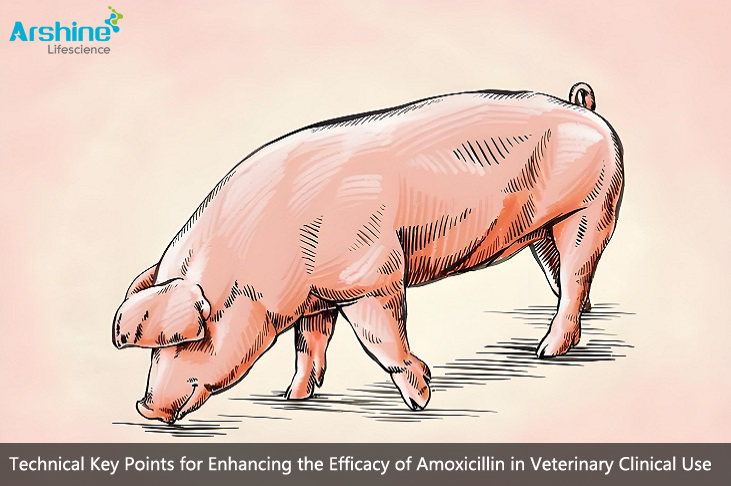

Arshine Amoxicillin is a commonly used antibiotic with excellent effects on systemic infections in animals. However, more and more people are noticing a decline in its effectiveness. Does this mean that amoxicillin is no longer a viable option? Or has its efficacy not been fully realized? Today, we will discuss several important points or suggestions for optimizing the use of amoxicillin in the clinical treatment of livestock and poultry.
First Tip: Since amoxicillin is unstable and easily decomposes in water, we recommend administering it twice a day, with a 12-hour interval between doses. Otherwise, the effectiveness may be reduced. In practical production, the five-day dosage of amoxicillin can be concentrated over three days. For the first two days, administer the drug twice daily, with a 12-hour interval between doses, and once on the third day. This dosing schedule can significantly enhance efficacy.
Second Tip: Combining amoxicillin with ambroxol hydrochloride can increase the concentration of amoxicillin in the bronchial and lung tissues by 27%, which is particularly effective for treating mild pneumonia, tracheitis, or bronchitis. The specific dosage ratio is: 12g of 70% water-soluble amoxicillin + 3g of ambroxol hydrochloride + 3g of probenecid, mixed with 150-200 jin of water (approximately 75-100 kg). It is crucial to use ambroxol hydrochloride, not ambroxol, as the latter is not easily soluble in water.
Third Tip: In some clinical cases, the effectiveness of amoxicillin may decrease over time due to the development of bacterial resistance. In such situations, it is recommended to combine amoxicillin with amoxicillin-clavulanic acid to effectively combat resistance. The ideal clinical ratio of amoxicillin to amoxicillin-clavulanic acid is 4:1.
Fourth Tip: The formulation of amoxicillin requires a high level of technical expertise and manufacturing processes. Therefore, the efficacy of amoxicillin from different manufacturers may vary significantly. Amoxicillin from well-known large companies tends to be more stable and effective.
Fifth Tip: Amoxicillin is best administered through drinking water. Under the same dosage conditions, the absorption rate of amoxicillin through drinking water is about 20% higher than when mixed with feed. This is because calcium, magnesium, aluminum, and other metal ions in the feed can affect the activity and stability of amoxicillin. For better clinical results, administer amoxicillin with water on an empty stomach for maximum absorption.
Sixth Tip: For water-soluble amoxicillin powder, the active ingredient content in low concentrations (such as 5% or 10%) is too low, with over 90% consisting of excipients. For penicillin-type drugs, if excipients exceed 80%, they can negatively affect the stability and absorption of amoxicillin. On the other hand, excessively high concentrations leave little room for improvements in formulation techniques to enhance the drug’s stability (amoxicillin is inherently unstable). The optimal concentration for water-soluble amoxicillin powder is in the range of 20-40%, balancing formulation techniques and clinical efficacy.
Seventh Tip: Dissolving amoxicillin in water that is too hot can reduce its effectiveness. Research shows that amoxicillin can easily form allergenic polymers at high temperatures, with 60°C being the critical threshold. Therefore, it is best to dissolve water-soluble amoxicillin powder in cool or well water for animal use.
Add: Block 14, No.100, Luyun Road, Changsha 410205, Hunan, China.
Email: info@arshinevet.com
WeChat: +8618874001228
WhatsApp: +8615697311407
Tel:86-731-82294958